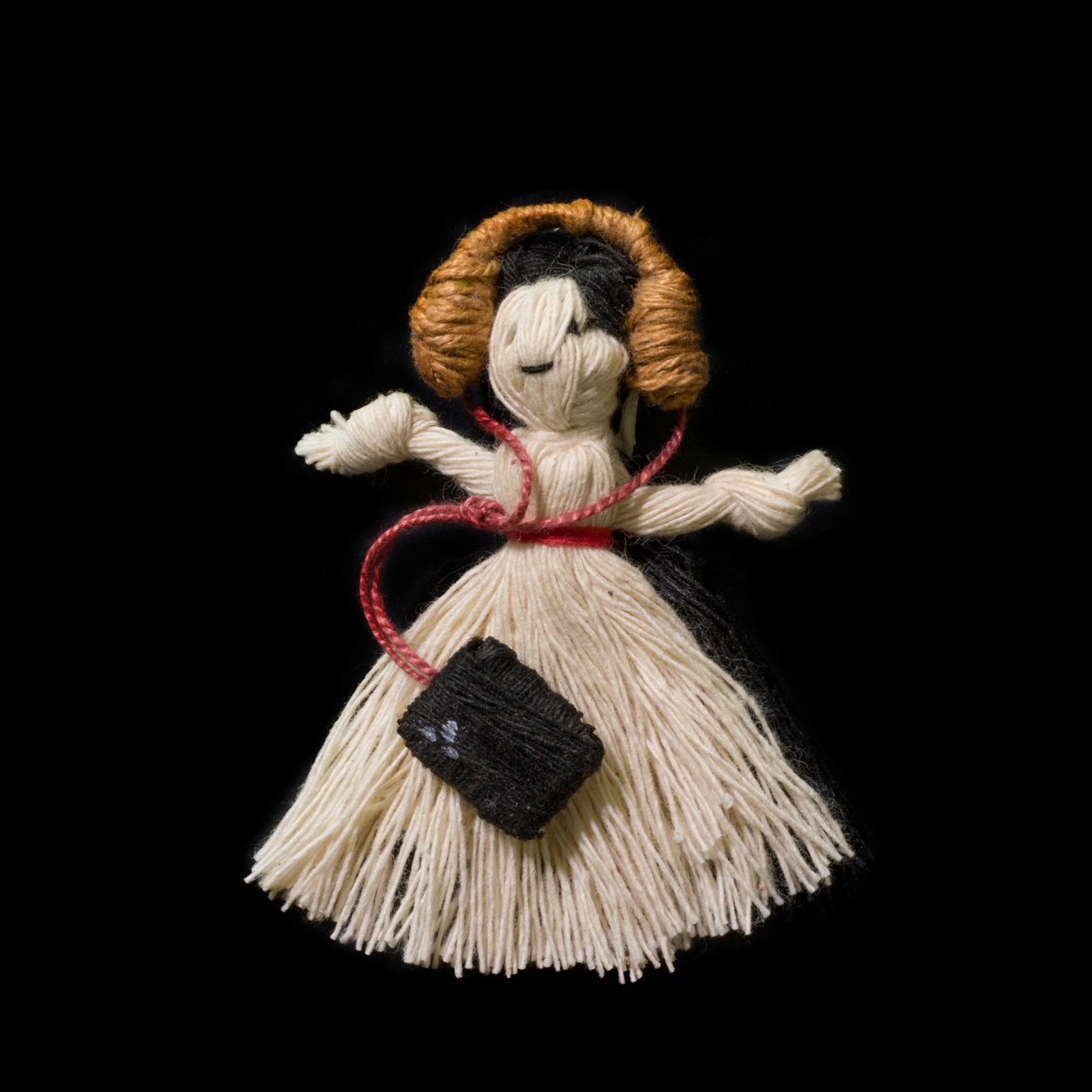Francisca Rojas Pohlhammer
The creative processes of Francisca Rojas begin from a critical reflection on the territory and its productive matrix, understanding these notions as carriers of a gesture from which it is possible to build a place of enunciation for subaltern art, that is, for that that is produced outside the large international centers.
Recently, these motivations have been addressed from an eminently feminine perspective and feminist, where material and technique have become its main signifiers. Through different procedures, the artist proposes the questioning of the distinctions between art and crafts, problematizing the clash of the Western world with the Westernized or half Blood.
Quipus. The “Quipus” series seeks to rescue this element's first-class dimension as data computer and ancestor of current computer systems, given that, in the Andean culture, for centuries it was the main device to store and organize information. Thus, in these works, through knots, and using the same numerical notation methodology as in the original objects, various Latin American phrases, quotes and proverbs have been written in binary code.
In this way, the works problematize the clash of the Western world with the indigenous world from the technological notion, assuming the contrasting views between the binary (typical of the West) and the dual (from the Andean perspective).
Ancestral Aliens. In her most recent production, the artist begins a new series called "Ancestral Aliens", in which she explores female representation in traditional Latin American crafts. In this installment, the choice of the tassel stands out as a characteristic element of the textiles, widely used to decorate woven objects, to hang in the hair or as ornament for animals, especially in Andean cultures.
In these pieces, the tassels take on a feminine appearance, configuring a kind of army where each figure presents distinctive characteristics typical of technology, current events and alien pop imagery. These textile elements, in turn, act as modules to form a general image that references both textile design and the Andean landscape, establishing an intersection between traditional and contemporary aesthetics.
Thus, the artist suggests a reflection on the Western premise that postulates that any advance technology on the American continent, prior to colonization, owes its origin to contact extraterrestrial, completely denying the civilizational development of the territory, even more so in the case of women.
Holy Dignity. In the case of the “Holy Dignity” series, the use of black ceramic alludes to pottery production, typical of the central-southern area of Chile, particularly Quinchamalí, whose material base proposes a questioning of the distinctions between art and craft.
In turn, the traditional feminine representation, given by the iconic artisanal model of the Quinchamalí Guitarrera, is resignified through a cross between local craftsmanship, colonial religious iconography and the contemporary popular imagination, both from the potteries themselves and from the artist.
BIO. Francisca Rojas Pohlhammer (Santiago de Chile, 1985)
Francisca Rojas studied a Bachelor's Degree in Art at the Pontifical Catholic University of Chile and Heritage Restoration at the University of Chile. She subsequently obtained an MA in Cultural and Creative Industries from King's College, London and has a Master's Degree in Visual Arts from the University of Chile.
Rojas is currently (2024) part of the exhibition New Worlds: Women to Watch at the National Museum of Women in the Arts in Washington DC and is holding a Solo exhibition at RoFa Projects: Dual Reflections: Marching Women.
She has held exhibitions in renowned museums and galleries, and participated in various fairs, such as the Museum of Contemporary Art (Chile), Factory Santa Rosa, Museum of Visual Arts (Chile), D21 Gallery, Omar Alonso Gallery (Mexico), Gabriela Mistral Gallery, BECH Gallery, TIM Gallery, Extension Center of the Catholic University, Sala el Farol of the University of Valparaíso, SWAB Barcelona, Estampa Madrid, Zona Maco CDMX, El Tranque Cultural Center, among others.
Likewise, she has been recognized with various awards and scholarships, including: MAVI Award Young Art 2020 (Honorable Mention); National Young Art Competition of the University of Valparaíso 2019 (Special Distinction); CIS Visual Arts Competition (First place 2017 and 2019); Chile Crea Scholarships 2020; Chile Scholarships 2010 – 2011; Padre Hurtado Academic Excellence Scholarship 2003 – 2006; along with numerous projects financed by the Government of Chile.
Her work is part of the collection of the AMA Foundation, of the Ministry of Cultures, Arts and Heritage of the Government of Chile, and numerous private collections.


























